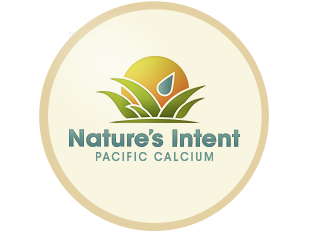Agronomic and Economic Evaluation Of Organic Nitrogen Fertilizer Materials Mark Gaskell, Ph.D, Farm Advisor
From the Central Coast Agriculture Highlights newsletter, February 1999
Little information is available to guide growers on efficient utilization of organic nitrogen fertilizer materials. There are many materials available commercially, and costs can range from around $1 per pound of nitrogen (N) to $50 or more per pound of N. With support from the Organic Farming Research Foundation based in Santa Cruz, we evaluated several of the materials that could be useful in a commercial organic vegetable production program. We evaluated seven different organic nitrogen fertilizers during the summer of 1998 on transplanted bell peppers. The trials were conducted at Nojoqui Farm near Buellton. The materials were:
These materials were chosen because they were some of the more economical materials which might be incorporated into a production program. These materials are also some of the more consistently available materials although the form and composition may change from time to time, and moisture content may also vary. We evaluated the materials as they arrived at the farm. If the dry material is bagged, moisture content may be higher, and the actual amount of N being applied may be less.
Compost (C) was the more economical of the fertilizers, but compost quality can vary greatly. The material we evaluated came from New Era. The pelleted chicken manure (PCM) is available from a couple of manufacturers, but as with the other materials, the N content may shift depending upon cost of feed for the chickens. Fish meal (FM), liquid fish (LF), Phytamin 800 or liquid soybean meal (LSM), feather meal (FTM), and seabird guano (SG) were also evaluated. Seabird guano is imported from Peru, and availability of seabird guano may also vary depending upon the supply contracts which are established with the Peruvian government.
Each material was applied at treatment reates of 0, 60, 120, and 180 lb N per acre to transplanted, sprinkler irrigated bell peppers.
Rate and Timing of Fertilizer Applications (lb. N/ac)
We measured weekly soil nitrate nitrogen (SSN) over 16 weeks post transplant and fresh bell pepper fruit yield for all treatments.
Overall, there was a marked increase in SSN with increasing N application rates with each material. Weekly SSN varied from lows of 4 ppm in the 0 N treated plots to over 80 ppm in FTM treated plots at the 180 N rate. Highest SSN was often observed in FTM, SG, LSM, LF, and FM treated plots at the 180 N rate, and peaks in SSN lagged fertilizer application three to four weeks. Plant tissue N also increased with increasing N application rates, but these increases were only statistically significant with FTM and SG.
Total pepper yield increased with increasing N rate with all materials. Total pepper yield was not as markedly affected as early yield and size by the different types of materials. Highest early yield and largest sizes were observed in FTM treated plots at the high (180 lb N rate). The higher early yields and the larger peppers tended to come from those materials such as FTM, SG, LSM, LF and FM which showed higher SSN. Compost and pelleted chicken manure consistently showed the lowest SSN levels at all levels of applied N. Compost and pelleted chicken manure also produced fewer peppers than the other materials even at the highest N rates.
Compost treated plots at 180 lb N produced highest economic return per fertilizer dollar because the compost has such a dramatic cost advantage over the other materials. The lower productivity of the compost overall is overwhelmed in the economic analysis by the dramatic cost advantage for compost. I hope to continue to evaluate these materials in future crop seasons. It is important to evaluate these materials at higher N application rates and to further investigate means of applying compost to improve N availability.

